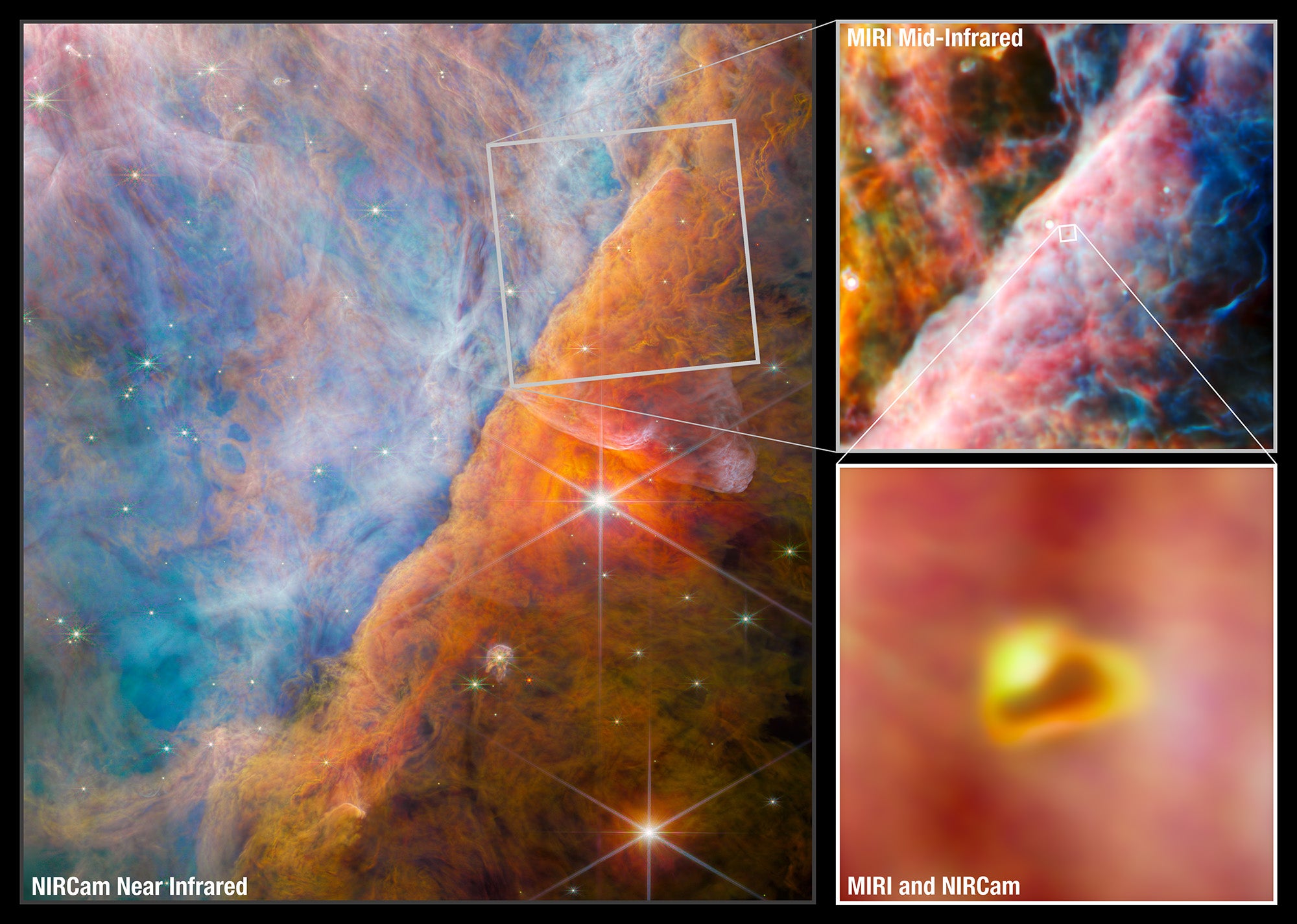
The James Webb Space Telescope (JWST) recently captured stunning images of a structure called the Orion Bar in the Orion Nebula. The large view on the left of the collage was taken using JWST’s Near-Infrared Camera (NIRCam); the top right image used JWST’s Mid-Infrared Instrument (MIRI); and the bottom right image shows both NIRCam and MIRI data of a protoplanetary disk known as d203-506, which surrounds a young star. These vibrant views were created using a total of eighteen filters.
Images like these showcase JWST’s remarkable capabilities to achieve the highest-resolution picture of the infrared cosmos. The data scientists collected to create these Orion Bar images also revealed something amazing. For the first time ever, a team of international scientists detected a carbon compound known as methyl cation (pronounced cat-eye-on), or CH3+, in d203-506. CH3+ is significant for understanding how life began on Earth — and how it might develop elsewhere. The compound is key to developing more complex carbon-based (organic) molecules that form the basis of life.
Located approximately 1,350 light-years away, d203-506 neighbors hot, young, massive stars that flood the region with strong ultraviolet (UV) light. But because UV radiation normally destroys complex organic molecules such as CH3+, discovering emission from the compound seemed curious. The team hypothesizes that the abundance of UV radiation coming in is, in fact, providing the energy needed to produce CH3+. “This clearly shows that ultraviolet radiation can completely change the chemistry of a protoplanetary disk,” said Olivier Berné, of the French National Centre for Scientific Research in Toulouse, France, and lead author of the study, in a press release. “It might actually play a critical role in the early chemical stages of the origins of life.”
The team’s work was published June 26 in Nature.









